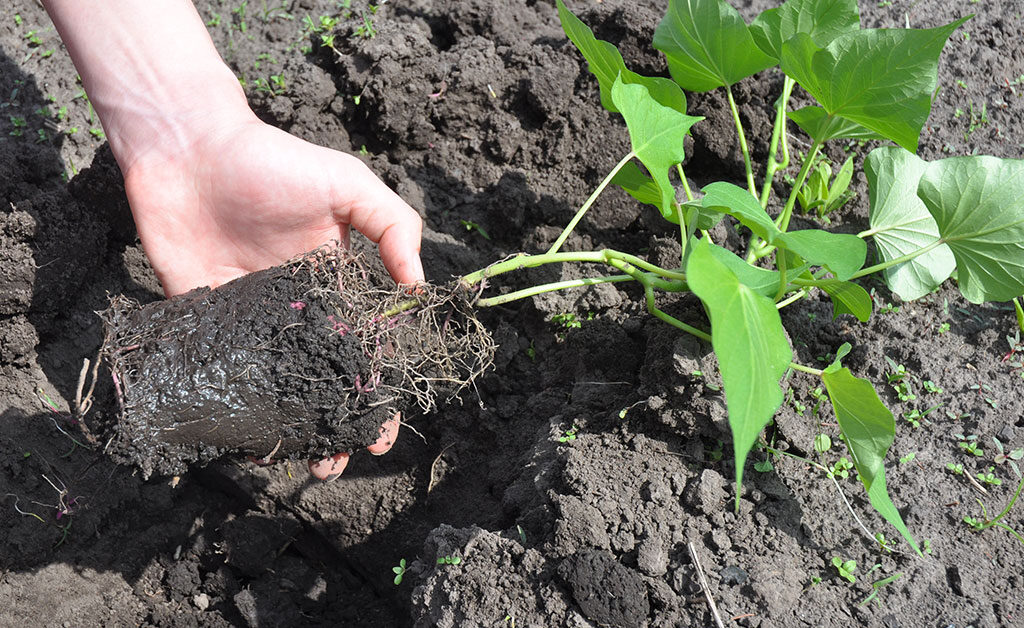Sweet potatoes aren’t just a holiday favorite or a health-conscious superfood — they’re also surprisingly easy to grow in your own backyard garden. These nutrient-packed tubers thrive in warm climates and can reward gardeners with a bountiful harvest of delicious, versatile roots.
Whether you’re a seasoned green thumb or a beginner looking to grow your first crop, this detailed guide will show you exactly how to plant sweet potatoes and cultivate a harvest you can be proud of.

Why Grow Sweet Potatoes?
Sweet potatoes (Ipomoea batatas) are not only delicious but also loaded with health benefits. Rich in fiber, vitamins A and C, potassium, and antioxidants, they’re an excellent addition to your diet. Plus, their attractive vines make them a decorative option for edible landscaping.
Benefits of growing sweet potatoes:
- Packed with nutrition and flavor
- Heat- and drought-tolerant
- Require minimal maintenance once established
- High-yielding with sprawling vines that double as ground cover
- Suitable for in-ground gardens, raised beds, or containers
When to Plant Sweet Potatoes
Sweet potatoes are warm-season crops that require a long growing season — typically 90 to 120 frost-free days.
- Plant outdoors when soil temperatures reach at least 60°F (16°C), ideally about 3 to 4 weeks after the last spring frost.
- In cooler regions, you can start slips (sprouted shoots) indoors 6–8 weeks before transplanting outdoors.
Understanding Sweet Potato Slips
Unlike regular potatoes, which are grown from seed potatoes or cut pieces, sweet potatoes are propagated from slips — young vine shoots that grow from mature sweet potato tubers.
You can either:
- Buy slips from a nursery or online supplier
- Grow your own slips from store-bought or homegrown sweet potatoes
How to start slips at home:
- Place a healthy sweet potato in a jar of water, submerging half while leaving the top exposed.
- Set it in a warm, sunny spot indoors.
- In 2–4 weeks, sprouts (slips) will emerge.
- Once slips are 5–6 inches long, twist them off gently and place them in water to develop roots before planting.
Best Growing Conditions for Sweet Potatoes
Sunlight:
- Require full sun, at least 6–8 hours of direct light daily
Soil:
- Loose, well-drained, sandy, or loamy soil
- pH between 5.8 and 6.2
- Avoid heavy clay or rocky soil to prevent deformed tubers
Spacing:
- Allow plenty of space for vines to sprawl
- Plant in mounds, ridges, or raised beds for best drainage

How to Plant Sweet Potato Slips — Step-by-Step
Step 1: Prepare the Soil
Loosen the soil to a depth of 8–10 inches. Remove stones and debris to make room for the developing tubers. Incorporate compost or well-aged manure to improve fertility and texture.
Step 2: Create Mounds or Raised Rows
Sweet potatoes prefer slightly elevated planting areas.
- Form mounds or ridges about 8 inches high and 12 inches wide.
- Space mounds 3 feet apart to accommodate sprawling vines.
Step 3: Plant the Slips
- Dig a hole deep enough to bury the slip’s roots and about half of its stem (about 3–4 inches deep).
- Space slips 12–18 inches apart in rows.
- Gently firm the soil around the base.
Tip: Water slips immediately after planting to help them settle in.
Watering and Fertilizing
Watering:
- Keep soil consistently moist, especially during the first 4 weeks while slips establish.
- Once established, water deeply once a week, providing about 1 inch of water.
- Avoid overwatering, which can lead to rot.
Fertilizing:
- Sweet potatoes don’t require heavy fertilization.
- Use a balanced, low-nitrogen fertilizer to encourage tuber development rather than excessive vine growth.
- Apply compost tea or a 5-10-10 granular fertilizer at planting and again midseason.

Mulching and Weed Control
Apply a 2–3 inch layer of organic mulch such as straw, dried leaves, or grass clippings to:
- Retain soil moisture
- Suppress weeds
- Maintain even soil temperature
Be cautious not to mulch too thickly near the plant base, as this can promote rot.
Training and Managing Vines
Sweet potato vines can grow up to 20 feet long. While they don’t climb, they’ll sprawl across garden beds and paths.
Tips:
- Allow vines to cover ground, shading out weeds naturally.
- Gently redirect vines if they encroach on other crops.
- Avoid pruning vines excessively, as it can reduce yields.
Common Pests and Problems
| Problem | Cause | Solution |
|---|---|---|
| Sweet Potato Weevils | Bore into stems and tubers | Rotate crops, use certified slips |
| Wireworms | Larvae feed on tubers | Avoid planting in recently sod-covered areas |
| Root-knot Nematodes | Cause galls on roots | Plant resistant varieties, rotate crops |
| Rot (Fungal/Bacterial) | Excess moisture or poor drainage | Ensure well-drained soil, avoid overwatering |
When and How to Harvest Sweet Potatoes
Sweet potatoes are typically ready for harvest 90–120 days after planting, when:
- Leaves and vines start turning yellow.
- Tubers have reached a usable size.
Harvesting steps:
- Cut back the vines.
- Gently loosen soil with a garden fork to avoid damaging tubers.
- Carefully lift tubers from the soil.

Curing and Storing Sweet Potatoes
Freshly dug sweet potatoes need to be cured to develop sweetness and improve storage life.
Curing steps:
- Place tubers in a warm, humid environment (around 80–85°F with 85–90% humidity) for 7–10 days.
- After curing, store in a cool, dark, well-ventilated place (about 55–60°F) for up to 6 months.
Tip: Never refrigerate raw sweet potatoes, as cold temperatures can alter their texture and flavor.
Sweet Potato Growing in Containers
If space is limited, sweet potatoes grow well in large containers (at least 18 inches deep and wide).
Container growing tips:
- Use loose, well-drained potting mix.
- Plant 3–4 slips per container.
- Provide a sunny location.
- Water consistently.
Fun Facts About Sweet Potatoes
- Sweet potatoes are native to Central and South America.
- They’re not true potatoes and belong to the morning glory family (Convolvulaceae).
- Rich in beta-carotene, which converts to vitamin A in the body.
- In many cultures, sweet potatoes symbolize prosperity and good health.
Final Thoughts
Growing your own sweet potatoes is not only rewarding but also a practical way to supply your kitchen with a nutritious, versatile staple. With just a bit of warmth, space, and patience, you’ll be enjoying a homegrown harvest of creamy, sweet tubers perfect for roasting, baking, mashing, or even desserts.
So, roll up your sleeves, grab a handful of slips, and get planting — a delicious, healthy harvest is just a growing season away.





Leave A Comment